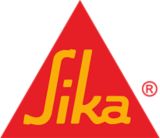
Sikaflex®-212 FC
Thixotropic sealant for buses, trucks and trailers
Sikaflex®-212 FC is a 1-component sealant of paste-like consistency that cures on exposure to atmospheric humidity. It is designed for internal sealing applications.
- Bonds well to a wide variety of substrates
- Can be over painted
- Low odor
- Can be sanded

